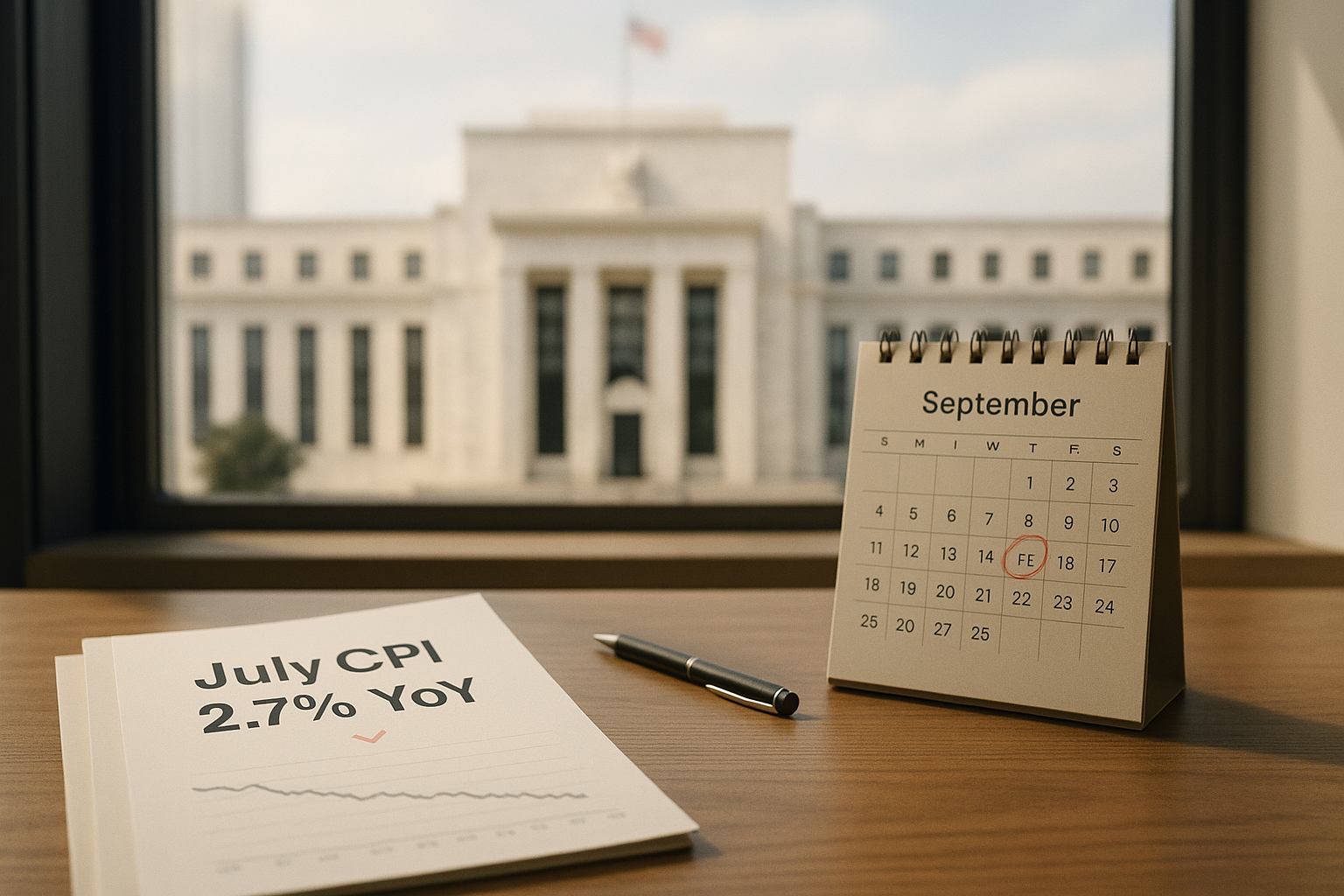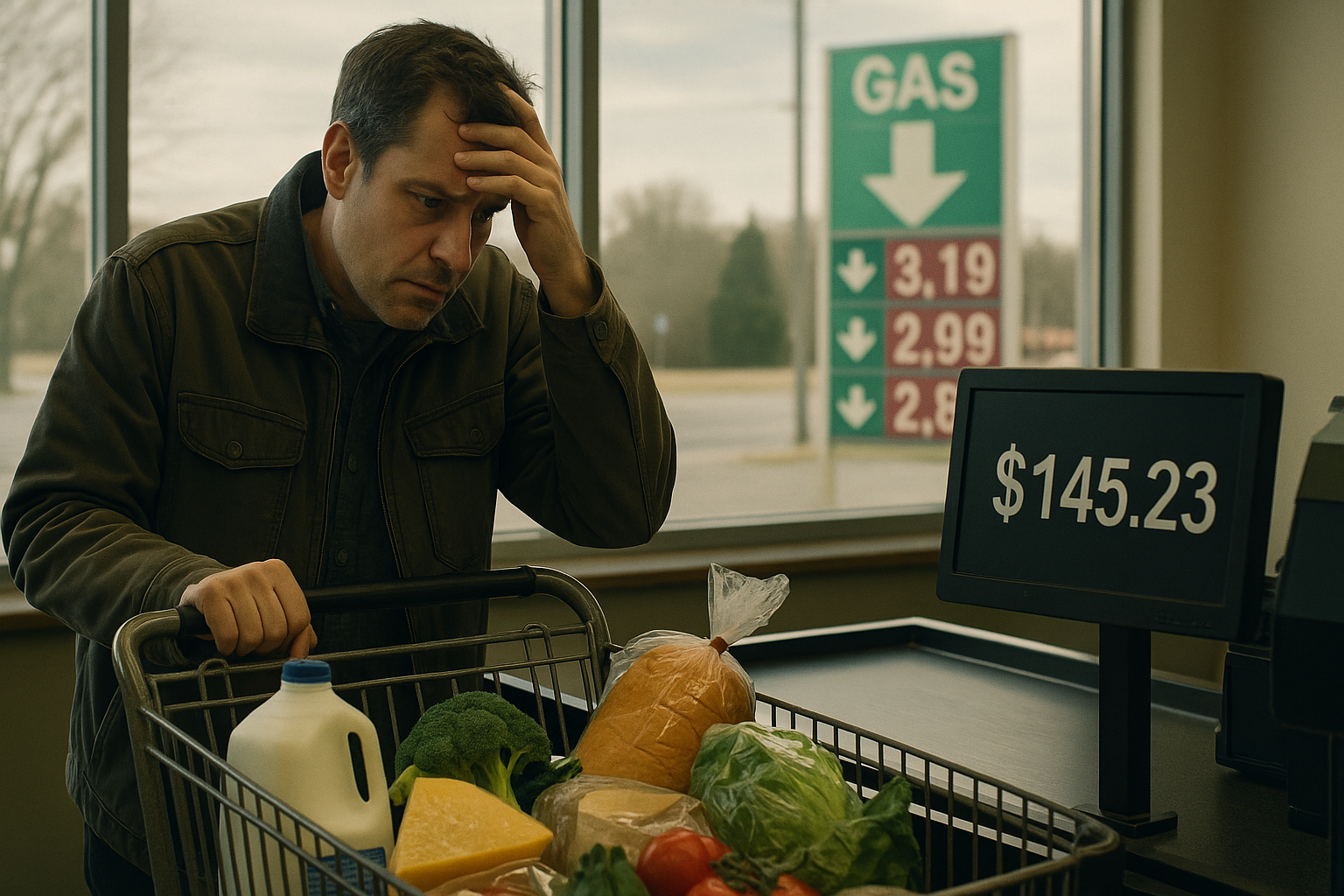Inflation is cooling off—slowly, stubbornly, but surely. July's Consumer Price Index landed at 2.7% year-over-year, just below what economists had penciled in at 2.8%. The monthly headline figure? A modest 0.2% increase.
Not bad. Not great either.
Core inflation—that pesky measure that strips out food and energy prices—rose 3.1% annually, ticking above forecasts of 3.0%. It's the sixth consecutive month core inflation has remained above 3%, a fact that surely keeps Fed officials tossing and turning at night.
What we're really watching is inflation's awkward middle phase. It's not the raging monster of 2022 anymore, but it hasn't fully settled down into the well-behaved metric the Fed desires. Like a teenager who's stopped throwing wild parties but still doesn't clean their room.
September's Rate Cut Looking More Likely
The market—always desperate for good news—has seized on this report like a lifeline. Combined with those recently revised job numbers (more on that bombshell in a moment), traders have now priced in a September rate cut with over 90% certainty.
Look, I've covered Fed policy since before the pandemic, and I've rarely seen the market this convinced of a move this far in advance.
There's a fascinating what-if scenario worth considering. Had the Bureau of Labor Statistics dropped its revised employment figures before the Fed's July meeting, Powell might already have cut rates. Those revisions showed the economy created about 818,000 fewer jobs than initially reported.
That's not a rounding error. That's nearly a million jobs that... well... don't actually exist.
Digging Into the Numbers
Housing costs—always the 800-pound gorilla in the inflation room—rose a mild 0.2% month-over-month. This matters enormously because shelter represents roughly a third of the entire CPI basket and has been stubbornly high for months.
Food prices were essentially flat. Grocery costs actually fell 0.1% while restaurant prices increased 0.3%. (So we're paying more for someone else to cook our cheaper ingredients—how very American of us.)
Energy provided some welcome relief, falling 1.1% in July, with gasoline prices dipping 2.2%. Remember when energy was driving inflation through the roof in 2021-2022? My, how times change.
The worrying spots were in services. Medical care, airline fares, recreation—all showed increases. And service-sector inflation tends to be stickier, more persistent, more tied to wage growth. This explains why the Fed isn't popping champagne corks just yet.
The Long Road Back to Normal
What we're witnessing isn't dramatic or headline-grabbing. It's the slow, grinding return to normal after a period of economic overheating that followed the pandemic.
Supply chains? Mostly fixed. Commodity markets? Stabilized. Labor market? Finding its balance again, though more slowly than anyone expected.
The Fed's preferred inflation gauge—Personal Consumption Expenditures (PCE)—typically runs about half a percentage point below CPI. That puts it around 2.2% right now. Tantalizingly close to the magical 2% target that Powell and company have staked their reputations on.
No wonder markets are so convinced we'll see rate cuts soon. After keeping rates at 23-year highs for over a year (a brutal policy by historical standards), the Fed appears to have pulled off the economic equivalent of a high-wire act without a net.
The soft landing might actually happen. Who would've thought?
What Happens Next?
The September FOMC meeting now looms as the turning point for monetary policy. With inflation drifting downward and the labor market clearly cooling—or perhaps never having been as robust as we initially believed—the case for maintaining such tight policy is evaporating.
I've spoken with several economists who believe the real question isn't whether the Fed cuts in September, but what their pace will be afterward. Will we see the careful, measured "25 basis points per meeting" approach? Or might deteriorating conditions push them to move faster?
One thing history teaches us: once the Fed starts cutting, they typically keep going in that direction unless something dramatic changes the picture. The first cut is rarely the last.
For those who've adapted to the highest interest rates in a generation—investors, homebuyers, businesses seeking capital—the coming rate cuts represent both opportunity and adjustment. The era of easy money won't return overnight... but the compass needle is definitely swinging in that direction.
Inflation's slow, stubborn retreat continues. And for once, slower might actually be better.




